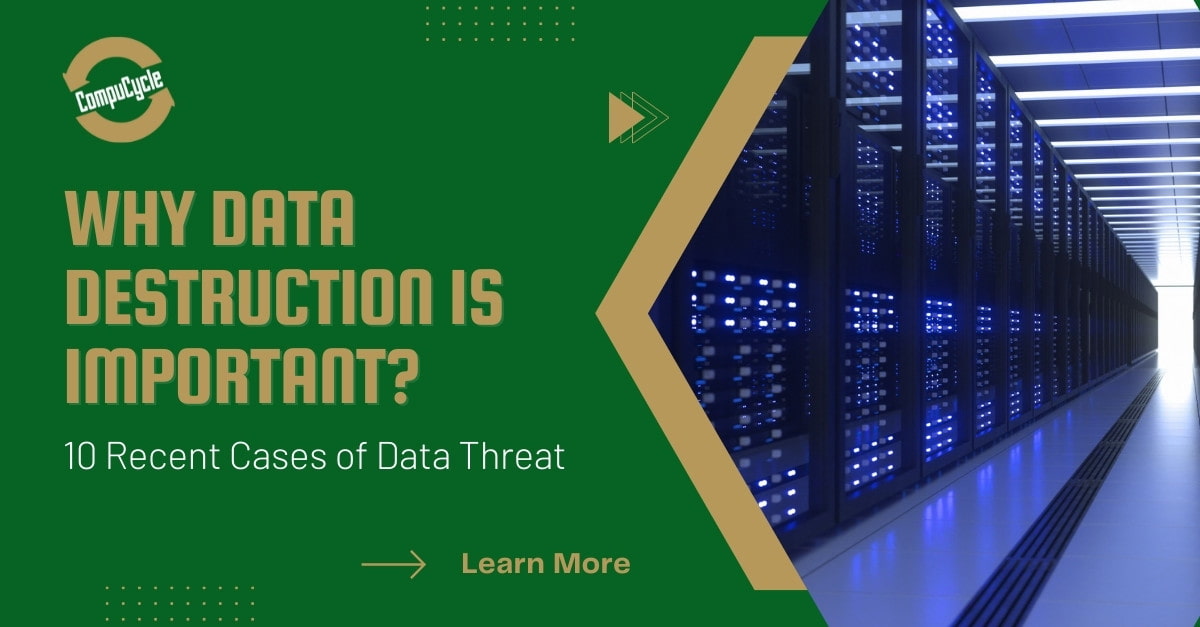The Effect of Effective Data Destruction on Cyber Security Risk Monitoring
The Effect of Effective Data Destruction on Cyber Security Risk Monitoring
Blog Article
The Relevance of Effective Information Damage Practices in Safeguarding Sensitive Information and Ensuring Computer System Safety
In an age where data violations are significantly usual, the significance of effective information damage methods can not be overemphasized. Organizations face considerable risks when delicate info is inadequately disposed of, possibly resulting in unapproved gain access to and severe monetary effects. Applying robust data damage methods not just minimizes these risks but likewise lines up with lawful compliance needs, ensuring that organizations copyright their credibility and foster customer trust. However, the inquiry continues to be: what specific strategies can be used to improve these techniques, and just how can organizations successfully incorporate them right into their total cybersecurity structure?
Understanding Data Destruction
Recognizing data damage is crucial in today's digital landscape, where delicate information can quickly be jeopardized. Efficient data destruction involves not just ensuring yet erasing data that data is irretrievable through extensive techniques. This process is necessary for organizations that deal with private client details, intellectual home, or interior records, as any type of violation can lead to severe monetary and reputational effects.
Information damage includes different techniques, consisting of shredding physical media, degaussing magnetic storage space gadgets, and using software-based services that overwrite information numerous times. Each method serves a specific objective and must align with the level of sensitivity of the details being gotten rid of. As an example, physical damage is typically liked for hard disk drives having very confidential data, while software program methods could be enough for less sensitive info.
Moreover, adhering to market criteria and laws, such as the General Information Protection Regulation (GDPR) or the Medical Insurance Transportability and Accountability Act (HIPAA), is important for conformity and to alleviate lawful risks. Organizations has to create a robust data destruction policy, train employees on ideal practices, and frequently audit their procedures to make certain that all sensitive info is dealt with firmly and efficiently.
Risks of Inadequate Practices
Inadequate data damage practices expose companies to substantial threats that can have far-ranging effects. When delicate information is not properly gotten rid of, it remains vulnerable to unapproved access, which can cause data violations and identification burglary. Such incidents not only compromise the protection of individuals yet additionally taint the organization's credibility, leading to a loss of customer count on and prospective economic consequences.
In addition, regulative conformity is progressively strict in several sectors. Failing to comply with data devastation laws can result in substantial penalties and lawsuits against companies. These penalties can stress funds and draw away focus from core organization operations.
Additionally, the misuse of recurring data can lead to intellectual residential or commercial property theft or business espionage, threatening competitive advantages (data destruction). The impact of poor data devastation extends beyond prompt economic losses; it can likewise result in long-term damages to brand honesty and market setting

Organizations must identify that information safety and security is not exclusively concerning protecting against violations; it additionally encompasses the liable management of data throughout its lifecycle. Ignoring effective information destruction protocols can have catastrophic effects, underscoring the requirement for robust procedures to minimize these risks.
Ideal Practices for Information Destruction
Executing reliable data damage practices is vital for securing delicate info and preserving compliance official site with regulatory criteria. Organizations needs to take on a multi-faceted technique to ensure that information is irretrievable, thereby stopping unapproved access and potential violations.
First, data ought to be classified based on sensitivity, allowing companies to apply suitable destruction methods customized to the level of risk. For electronic data, using software-based data-wiping tools that follow sector requirements can successfully overwrite existing data. Physical destruction techniques, such as shredding or degaussing, are critical for tools that store delicate information, ensuring complete obliteration.
Establishing a clear information retention plan is crucial, outlining exactly how long various sorts of information should be preserved before damage. Regular audits of data storage space systems are also necessary to identify unneeded or outdated data needing elimination.
Additionally, training staff members on the value of data damage and the certain methods to adhere to fosters a culture of security within the company. Ultimately, preserving paperwork of information damage processes supplies accountability and sustains conformity with inner policies and external guidelines. By adhering to these finest techniques, companies can substantially reduce the threats related to data direct exposure.
Legal and Compliance Factors To Consider

Failing to follow these guidelines can cause extreme penalties, including substantial fines and reputational damages. Organizations has to implement a robust information damage policy that aligns with these legal structures and supplies clear standards on the appropriate methods of information disposal, whether physical shredding or electronic wiping.
Furthermore, preserving documentation of information devastation activities is important for demonstrating conformity during audits or inspections. By focusing on lawful and conformity considerations, companies can enhance their information safety posture and foster trust fund with clients and stakeholders, eventually adding to a more safe information administration setting.
Benefits of Effective Data Destruction
Effective information destruction methods expand beyond mere compliance; they provide considerable benefits to companies that prioritize them. By ensuring that delicate details is irretrievably damaged, companies minimize the risk of data breaches and the prospective economic effects related to them. This proactive technique not only safeguards against unapproved gain access to however also improves the general trustworthiness of the company in the eyes of stakeholders and customers.
Applying durable data destruction approaches, such as physical devastation of storage space gadgets or innovative information wiping strategies, contributes to the fortifying of an organization's cybersecurity stance. data destruction. It reduces the likelihood of copyright theft and protects exclusive info, thus preserving an affordable edge out there

Verdict
To conclude, effective information devastation practices are important for safeguarding sensitive information and boosting overall computer safety. By applying extensive techniques such as software application, degaussing, and shredding overwriting, organizations can mitigate the dangers connected with unapproved gain access to and information violations. Adherence to governing criteria, including GDPR and HIPAA, additional reinforces conformity and shields against lawful consequences. Eventually, a dedication to robust information damage approaches promotes a culture of obligation, consequently reinforcing an organization's cybersecurity stance and maintaining client depend on.

Report this page